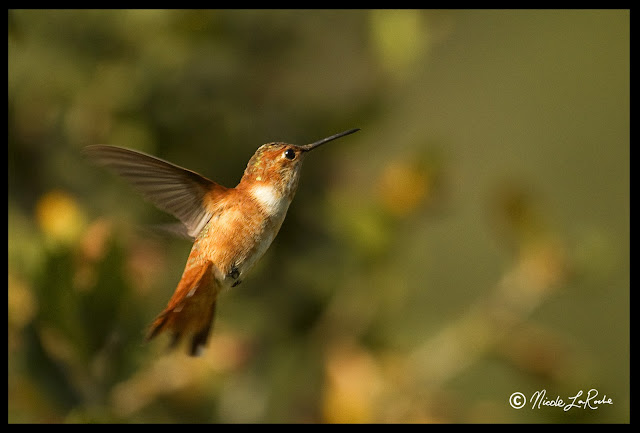It is hummingbird migration time, and that means they are filling up and getting to nest. In Big Sur, we have Anna's (
Calypte anna)and Allen's (
Selasphorus sasin) hummingbirds nest and Rufous (
Selasphorus rufus) pass through on their way migration route. Anna's hummingbirds are here year round and are the first to nest. I have been searching trees, but haven't found any nests yet (of course I am not invasive, so there may be many I can't find). Allen's and Rufous hummingbirds are very similar and are very hard to tell apart. The males are distinguishable, but the female and immature males look almost identical except some very minor differences in the tail feathers. So, if they do not have their tail feathers spread, it could be either species.
These photos are from Thursday (3/10) afternoon. I was using my 7D with 100-400L lens shooting at F5.6 with iso at 400 (I bumped it up when the sun was starting to set).
 |
| Two female Anna's hummingbirds |
 |
| A male Anna's hummingbird feeding |
 |
| A male Rufous hummingbird |
 |
| A male Rufous hummingbird |
 |
| A female Anna's hummingbird preening |
 |
| A very talkative male Anna's hummingbird |
...More hummingbird photos coming very soon!












































